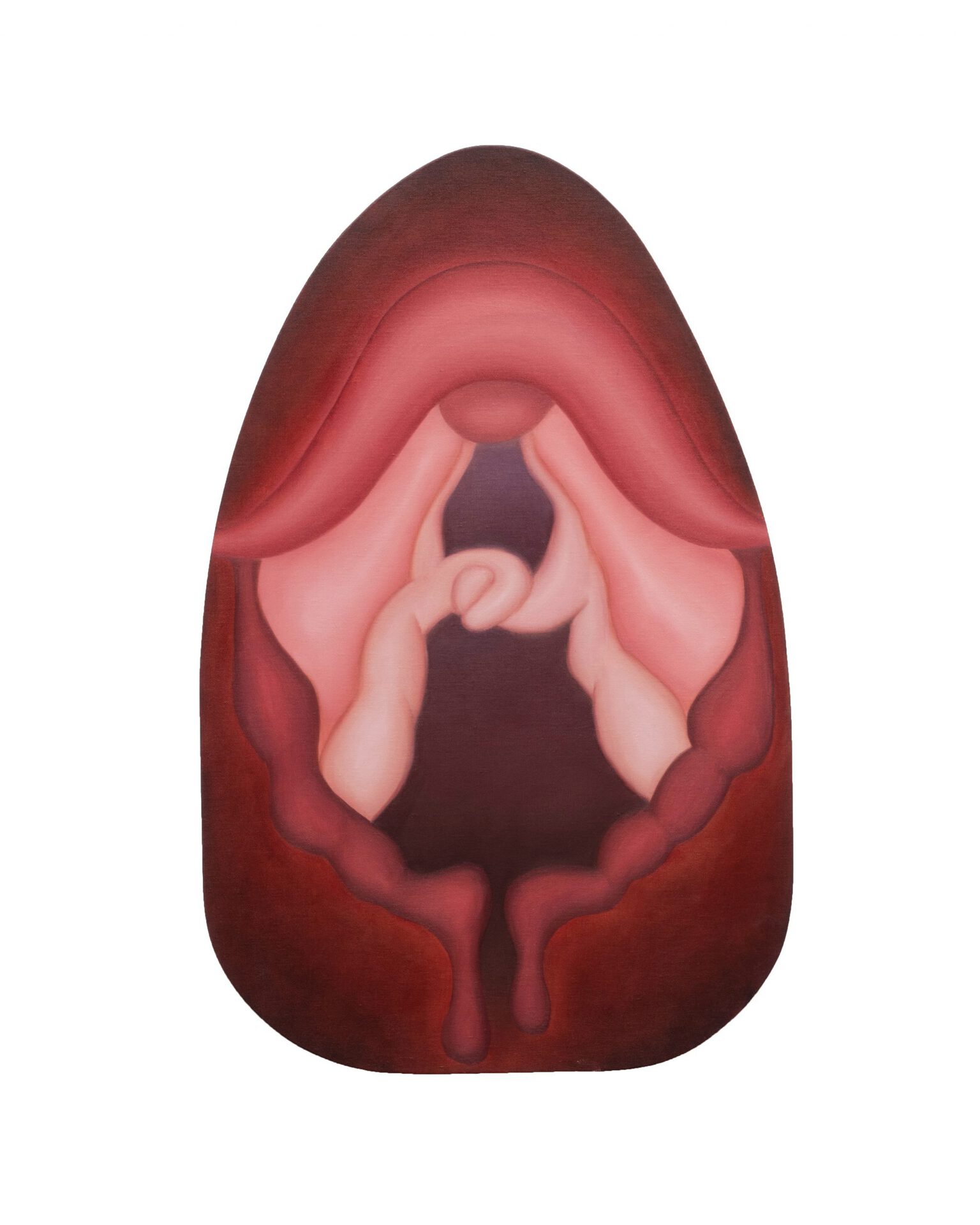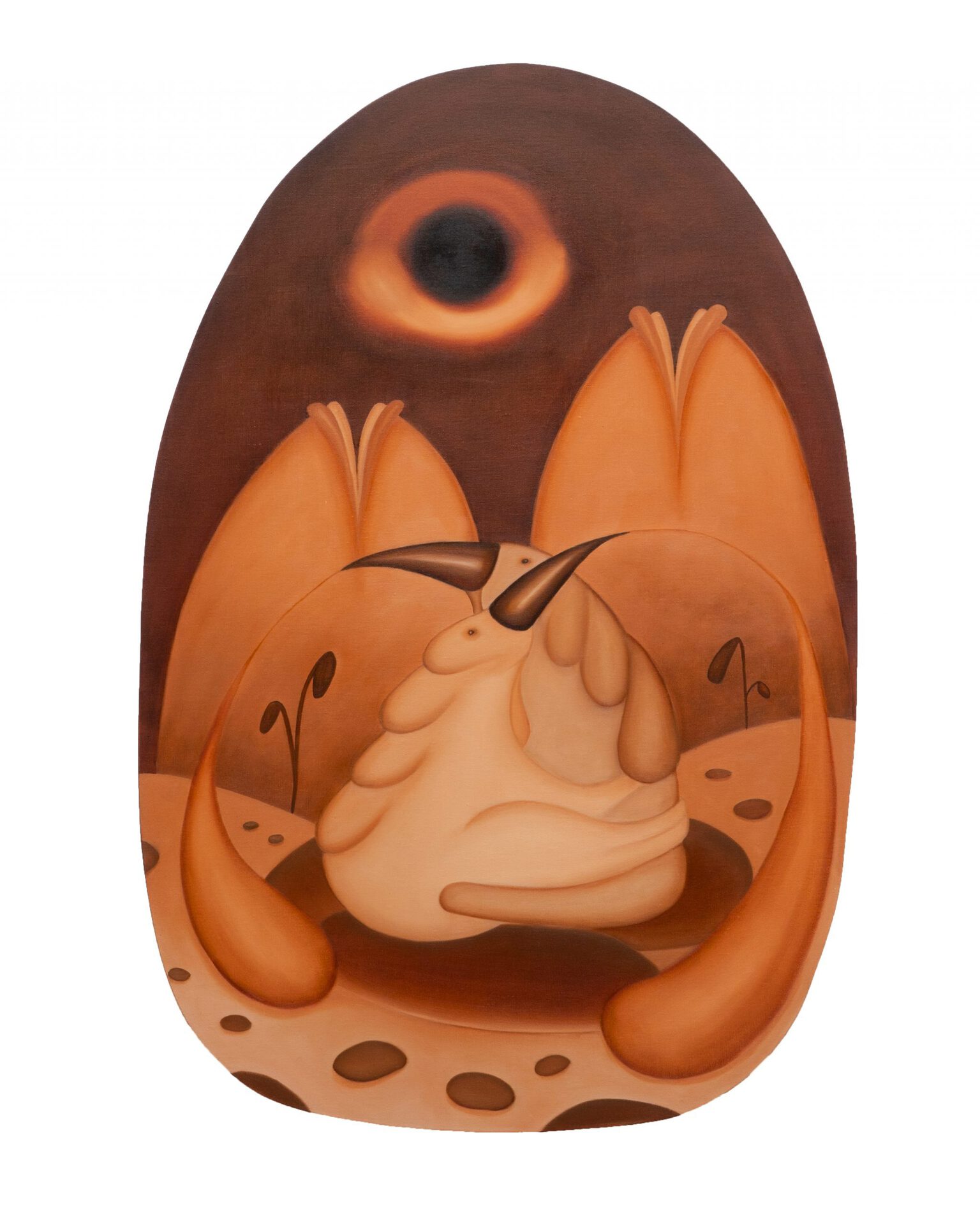Archive
2020
KubaParis
marianne-vlaschits-viennacontemporary-2020





Location
viennacontemporaryDate
23.09 –26.09.2020Curator
Cathrin Mayer (curator of ZONE1)Photography
kunst-dokumentation.comSubheadline
Marianne Vlaschits | Galerie Sophia VonierText
There is a physical, spatial and spiritual expanse between inside and outside, but their delimitation from one another can never be precisely determined. In this sense, they are not two poles, but a fluid unit that moves chronographically between the past and the future, spatially extends over various dimensions and can bring us to the limits of our perception. In the midst of this diversity, Marianne Vlaschits (born 1983 in Vienna, lives and works there) positions her most recent works, whose symbol and leitmotif are dreams at the same time. An oversized, sleeping female figure forms the basis and anchoring in our reality. Reduced to a mere shell, its full, soft body arches over the entire wall surface. In reference to neo- to palaeolithic fertility goddesses and occult priestesses, whose obesity has been idealized, the artist devises a wall piece that, in its abundance and convex shape, is reminiscent of the places where women artefacts were found: the pagan catacomb, known as the hypogeum, is the underground venue for a fictional journey that leads us into the unearthly. To a certain extent decoupled from her humanity, our priestess floats as a (T) spaceship through a universe that offers her timelessness and space for a new examination of her past human existence.
Marianne Vlaschit's gentle giantess offers space for organic works, the formal qualities of which manifest themselves in portals to mediate between her dreams and the outside world. The beginning is literally a navel gaze: “Primordial Mouth”, the first mouth, shows a close-up of the former connection between woman and fetus on an irregularly oval picture carrier. This is followed by abstract images of other organs and connecting passages between the outside world and the inside of the body. Larynx (“Tight Portal”), pharynx (“Blocked Portal”) and bowel (“Rose Portal”) offer us access as micro-portraits. In addition, scenes of a fictional narrative are shown, the protagonists of which only have vaguely humanoid traits. They seem distant, like a macro shot of a reflection on physical and mental existences. All of the works are linked by the irregular shape of their image carrier, which stands outside the strict standardization of the rectangle, and the color palette, which - suggesting naturalness instead of artificiality - reflects on the clay, ocher and flesh colors of the prehistoric beginnings of painting.
We sink deeper and deeper into the extraterrestrial world that we find in the works. Marianne Vlaschits prepares a stage in one dimension, whose fauna and flora can no longer be assigned to the earth planet. Scenes that mimic science fiction are presented on it: beings who are deformed, stretched, bloated and fused into one another, their limbs no longer distinguishable from their genitals, interact with one another in a vacuum. In and on them there are again perceivable as well as visible portals - accesses to other dimensions - in which the inside and the outside turn inside out, mix and become one in infinity. (“Glowing Hole”, “The Vessel”, “The Love between Painting and Poetry”).
The way of communication of the foreign living beings is conceivable as transmission via their fine horn antennas and via their gestures. Because what emerges in the entire installation is the focus on a systemically repeating but free form of information transfer. From the body to the mind and back, impulses are stimulated that lack any classical language and yet find their own language. It's an invisible, mysterious communication that we don't know how it works; nevertheless it becomes noticeable in the work. But how can such a form of "pure", abstract information be made physically tangible? Within the dream metaphor, a new confrontation with what is said, painted, sensual and sexual can take place: Thoughts and their diverse expression in language and painting, but also the sexual act as an exchange of genetic material and physical sensory impressions, are topics that Marianne Vlaschits addresses us within their infinite , all connecting cosmos.
text: Andrea Kopranovic
Andrea Kopranovic